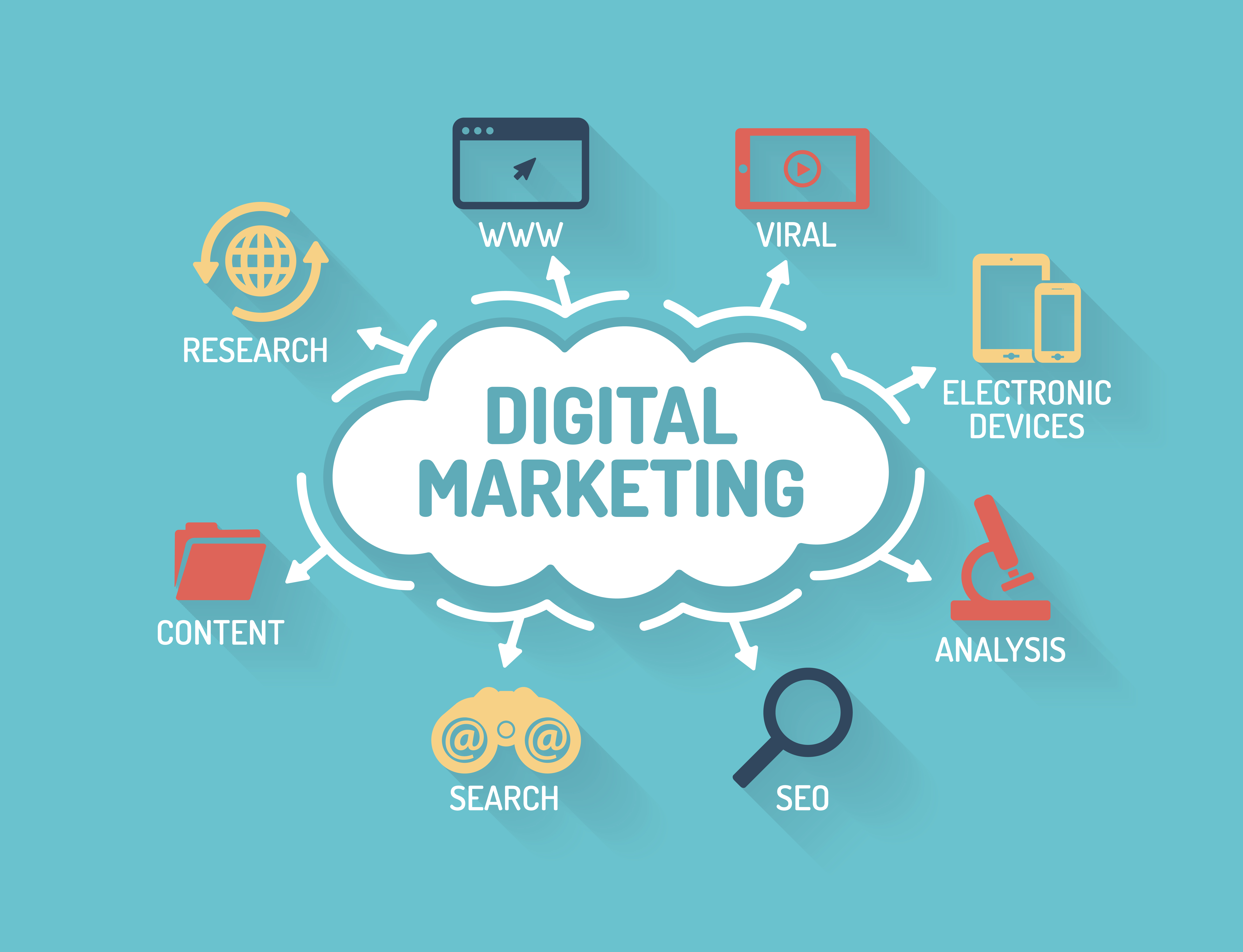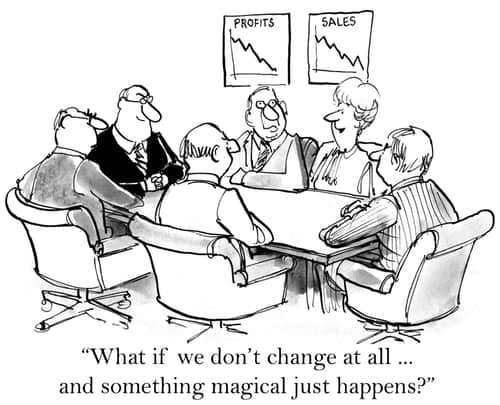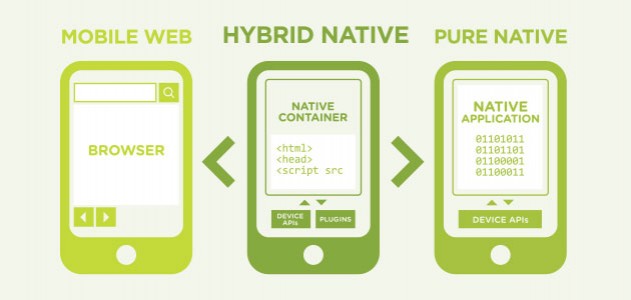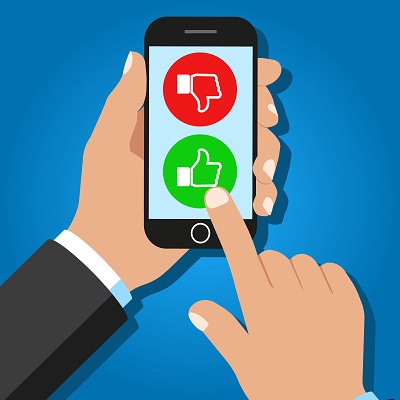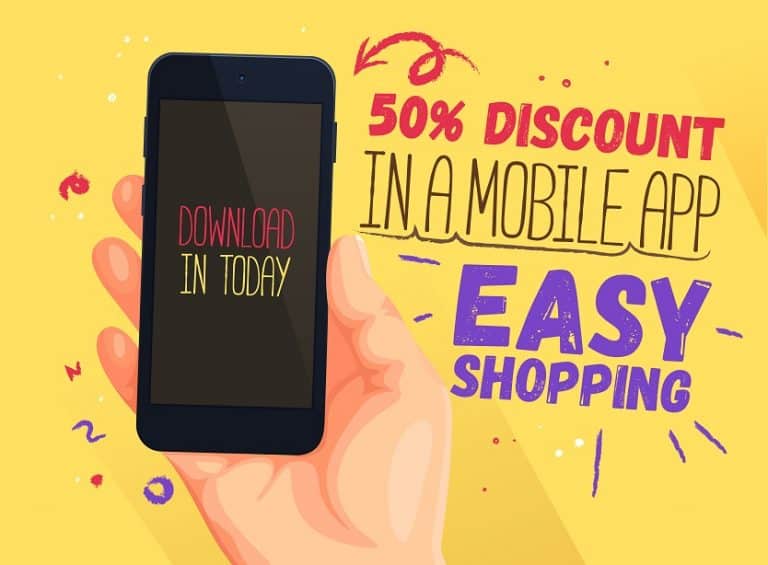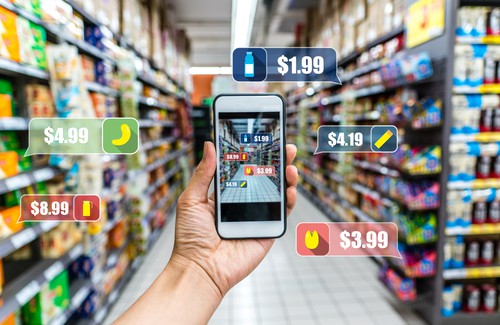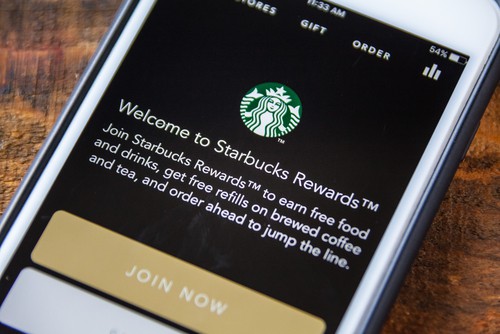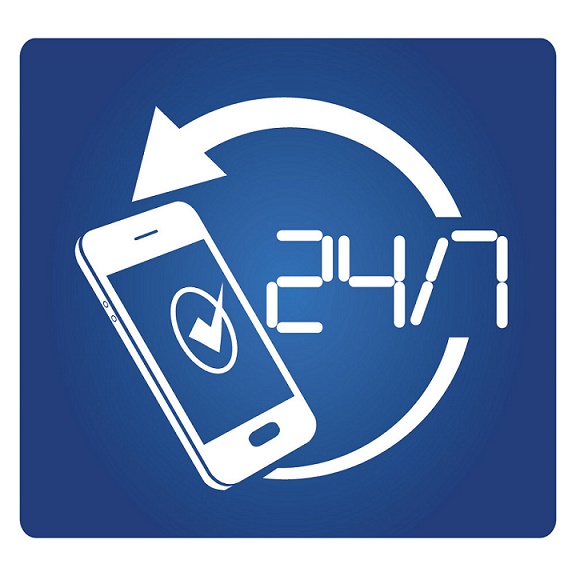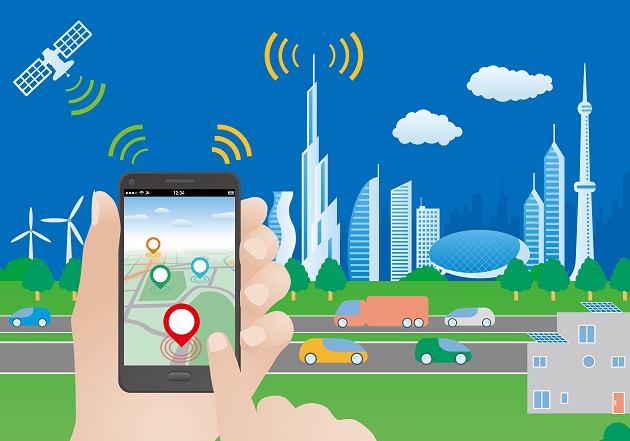Category: Enterprise Mobility
Businesses in the present are making every move to ensure that they stay ahead of their competitors in the market. A rapid growth in terms of market share, revenues and customer base is desired by every business unit. One of the strategies being used by the businesses to ensure faster growth is the development and deployment of the enterprise mobility applications.
Enterprise Mobility is the trend that allows the employees of a business organization to work remotely to fulfill the business tasks and activities using mobile devices, mobile applications, and cloud-based solutions. An enterprise mobility application refers to a mobile app that is developed to target the enterprise-related problems.
Enterprise mobile applications can enhance business growth for companies in the following ways:
- Better Work-Life Balance
Every employee engaged with an organization aspires to maintain a healthy balance between the professional and personal commitments. Enterprise Mobility Applications allow the employees to experience better flexibility by allowing them to carry out business tasks from any of the remote location. 69% of the IT decision-makers support the idea of BYOD as they have witnessed positive results with the inclusion of the same. Workers in the United States on an average save 81 minutes per week with the aid of BYOD. There are 49% employees that say that they are more productive while working on their personal devices.
- Improved Workflow
Critical issues may crop up in a business environment anytime, without prior notices or hints. Enterprise mobile applications allow the employees to resolve such issues on an urgent basis irrespective of their presence and availability at the office location. Real-time interactions are also made possible with the clients that result in better customer engagement and satisfaction. The overall workflow, therefore, improves with the use of such applications.
- Reduction in Costs
Enterprise mobile apps can be made compatible and accessible on the personal devices of the staff members. It leads to the reduction in the cost of the devices and the share may be used in other significant business requirements.
- System Independence
There is a higher level of system independence provided to the employees with the use of enterprise mobility applications. It leads to the execution of the tasks from any network and the tools are installed in the devices of the employees.
- Reduced Paperwork
More paperwork leads to increase the number of risks in the business, such as loss of documents, replication of data and inefficiency in the storage and management of the documents. With the use of enterprise mobility applications, there are electronic documents that are used for sharing and transactions. These are easier to maintain and can also be processed at a faster pace as compared to the paper-based documents. The overall business speed, therefore, gets enhanced as a result.
- Customer Engagement
With the improvement of the workflow of a business and the non-stop availability of the employees, the customers feel connected with the organization. There are higher levels of transparency that can be maintained to gain customer trust and satisfaction. Rapid resolution of the defects and issues along with urgent sharing of information are some of the abilities that are made possible through the enterprise mobility applications. It leads to the better engagement with the customers and the reputation of the business organization also improves in the market.
- Empowers the Field Workers
There are several businesses that include a lot many field workers to carry out operational business activities. These field workers may experience certain issues such as difficulty in understanding a task or emergence of a conflict between two resources. Enterprise mobility applications may be used in such scenarios to contact the team heads and managers for maintaining the continuity of the operations. Also, activities such as status reporting and sharing of information can be done in a matter of seconds. All of these capabilities lead to enhancement of the processing speed of the operations resulting in faster business growth.
There are technological innovations and advancements that are being carried out with each passing day. It is required for the business organizations to remain updated with the technological changes and adapt the same to their functioning. The practice will allow the business units to achieve their goals accurately and rapidly. Enterprise mobility applications are a contribution of technology that has benefitted a lot many organizations. However, the inclusion of these applications in the business architecture may vary from one business unit to the other. Factors such as nature of the business, projects that are undertaken by the organization, customer expectations, project team members etc. shall be considered before moving on to the use of enterprise mobility applications.
Stay up to date on what's new

Featured Blogs
Stay up to date on
what's new



Talk To Our Experts
In today’s digital age, a website is your business’ window to the world, irrespective of whether you are a brick and mortar establishment or an online entity. Similarly, the need for a dedicated website is not just limited to startups but is equally vital for established business. Even if your business is doing exceptionally well, investing in a well-designed and responsive website can help you reach out to a wider cross-section of the audience and increase your sales manifold.
Here is rundown on how custom website development services can turn the tide for your business:
Website Development and Its Advantages
Custom web development is one of the finest things you can do to guarantee the success of your business. In addition to improving your visibility, customized website development can help your business in the following ways:
- Customized website development boosts your credibility and adds a certain brand authority to your business.
- A professional-looking website can bring you big gains without an astronomical investment, thus, offering a higher return on investment (ROI) than traditional means of advertising.
- It does not matter whether you are a newbie or a seasoned market player, there is bound to be competition in your realm of trade. A dedicated website can assist you in leveling playing field and even beating your competitors.
- It boosts your advertising and marketing endeavors across different channels. Your social media marketing and email marketing campaigns are likely to resonate better with your audience if these lead them to a website.
- Custom designed websites are cross-browser well-matched.
- Custom developed websites also costs nearly same as of any template based solution. They may have little higher cost but offer numerous benefits and total control on each part and role of the website.
Specialized, clean, and well-organized online presence is essential for preserving your brand reputation. General designs can create a negative impression of the product or service quality, the reason being customers see you as no dissimilar from thousand other companies. The website represents your business in terms of superiority, quality, and individuality, so you need to have one developed skillfully.
Importance of Multiple-Channel Presence
At a time when smartphones and handheld gadgets rule the roost, the number of people accessing websites through a desktop computer is fast dwindling. Almost everyone likes to browse the internet on the go. Therefore, a website with a responsive design – that ensures your website is displayed correctly and uniformly across platforms, devices and screen sizes – is essential to stay relevant in the dynamic online landscape.
As per statistics, whopping 67 percent users are more likely to use an enlisted service or buy products on a website with a clean, responsive design. In contrast, 61 percent users are likely to exit a website with an unfriendly layout and design. The bottom line is – a potential user may bounce back from your website and move to that of your competitors if you don’t cater to a multiple-channel presence.
How Digital Marketing Can Help
Building a website from scratch is no big deal, given the user-friendly content management systems like WordPress. Even so, if you really want to make an impact with your web presence, it is advisable to use professional custom website development services because you don’t just need to build a carefully-strategized site but also work toward improving your search engine rankings to attract massive traffic. People will know that you exist, only when your website is visible in search engine results. A smart digital marketing campaign can help in bolstering your web presence to clock-in tangible gains.
Stay up to date on what's new

Featured Blogs
Stay up to date on
what's new



Talk To Our Experts
Enterprise software solutions are the backbone of an organization. Selecting one for your organization is a great responsibility as it requires detailed analysis at each and every step. The major challenge lies in understanding that every organization’s structure is different and cannot do with the same software that was used in your previous organization or is used at the competitor’s company. To make your task easy, here are 8 challenges to avoid before purchasing an Enterprise Software.
1. Change Management
One of the key understandings that should come with a new Enterprise Software is that there is a need for identifying the changes in the IT infrastructure beforehand and then implementing it. Know how much change is required and if it is possible to handle before purchasing the new software. Also, the employees need proper training for change management and to get them comfortable with the new system before it goes live on an organizational scale.
2. Physical Requirements
Before jumping into a purchase decision, figure out what is the current IT infrastructure landscape, if it fits well or requires changes. For a newer setup, choose the software wisely and then plan the landscape. But remember, the software you choose defines this landscape and should be thoroughly checked to avoid any unwanted changes in the future.
3. The load of migration
Data is the basis for every industry functioning in this day and age. Introducing newer software to the system means adding your current data to it for validation and future operations. Check the requirements of the new system you plan on incorporating and if the required is way too much. Remember data is imperative to the organization and correct migration will minimize errors.
4. What the vendor has to offer
Sometime Enterprise Software vendors are too enthusiastic to sell the product but lack a structure post-purchase. Figure out what are the key support promises that they offer and if they have a track of delivering them. A due diligence of the provider should not be skipped especially if the vendor is not a big company.
5. Readying the team
Internal challenges are one of the key points to consider for the purchase. You will have to understand the requirements of the enterprise software development company well along with the features required. Each department will offer a different list of features they need. The challenge is to create a project scope that encapsulates all these important points and uses it as a foundation to identify the right software.
6. Software scope
Considering any enterprise software, and its capabilities, it is quite hard to find one that has everything that a business needs. As organizations strive to meet individual customer demands, they rely on customization to align their strategic objectives with enterprise solutions. For instance, one of our leading real estate organizations wanted to add a document management function that enabled them to share documents easily with their field agents. However, this posed numerous regulatory constraints considering security and privacy. Our solutions experts realigned the software architecture and build processes to meet the client’s requirement.
7. Taking unwanted risks
The market has opened up for Enterprise Software like never before and every day a new solution surfaces that promises to offer the best of all worlds. New-age technology can be highly enticing but always look under the hood and see if it has been taken for a test drive. Check LinkedIn, job boards, or other forums to find out more about the seller and the software itself. Don’t elevate your risks by getting attracted to high-end technology or pricing.
8. No detailed analysis
One of the issues that hamper the procurement of the right enterprise software is the lack of understanding of your own system. Run the analysis several times and match it with what the software will provide. Keep in mind to not depend on what the next version update will feature, rely only on what the solution provides today.
9. Cutting the influences
Decision making in organizations sometimes doesn’t necessarily stay with the designated employees. It is directly or indirectly influenced by the owners or other people in important positions. No matter how well they know or what better deal is offered through a reference, ensure that the decision, in the end, comes keeping the organization in mind and not the influences.
10. Exploring all opportunities
Do not hesitate to look at third-party support alternatives as they might offer something similar or better than premium vendor support. Look at the maintenance rates that come with the software as it is something that your organization will incur on a regular basis.
Whether you are trying to set up a new system or replace an old one, an expert perspective can help reduce these risks and challenges.
Stay up to date on what's new

Featured Blogs
Stay up to date on
what's new



Talk To Our Experts
A niche business is no longer a term used often these days due to growing competition in every sector. In the world of startups and well-established enterprises, the companies that stand out clearly in front of their customers will only survive and succeed. Smartphones and fast data packs are beneficial to companies in terms of reaching out to their customers via desktop and mobile websites. But having such a front is a norm today and you will have to think of giving a little more to engage them. According to studies, business mobile apps have a higher rate of conversation when compared to desktop or mobile websites. You must be thinking how will a custom mobile application development help boost your business? Here’s how –
1. Better customer relationship
A custom software development offers customers a way to access your services and products directly. Especially, if you are a product-oriented company, you can have your products laid out better over the standard formats of e-retailers. Also, you can send offers, notifications, and even receive feedback from customers in real-time. You can even have a dedicated app team that offers support 24 x 7 and sorts query for customers with in-app emails and chat.
2. Creating and maintaining database
A custom app will give you the opportunity to access existing customer data and acquire new ones. Also, your app will have your own specialized security features that will safeguard your data against potential leaks and threats.
3. Integration with current services
If you are a software provider then a good way to offer more to your clients is by creating a custom app that syncs with your software. There can be reports, updates, and even a way to access information quickly and easily. To further improve client satisfaction, you can even hire a dedicated support team for app management. Such integration will definitely give your software some extra brownie points while marketing it.
4. Generate revenue
Apps are not just a great way to connect with your customers but can also work as a good revenue source for the business. You can charge customers a little extra for app services or an upgrade. Also, you can have in-app advertisements that add income to your kitty whenever your app is accessed by the customers.
5. Increase customer base
An app ensures that a customer is in your space and the only things they can surf around are your products and services. Having a custom app gives you a chance to put your case forward to new customers and even attract them with in-app offers. You can start giving them free trials and additional discounts via app downloads to add to your revenue. A custom app will define your uniqueness as it adds up to a brand identity for your business.
6. Project Management
Apart from seeking and retaining customers, your entire team can benefit from having an app that works for internal purposes only. Custom logins at each hierarchy can give them access to groups, documents, tasks, calendars, and more to run your business smoothly no matter where they are working from. This is beneficial especially if you have several teams working from different locations. Each team can receive updates regarding the project. Also, it helps in sending critical issues to all the personnel quickly.
Building a custom mobile app for your business is vital in this day and age of competition. Once you are clear about what you want, it’s a good idea to approach companies such as ours that build custom apps from the ground up.
Stay up to date on what's new

Featured Blogs
Stay up to date on
what's new



Talk To Our Experts
If you are reading this blog article, chances are that you are either contemplating to have a mobile app built for your business or you are a developer wanting to know how much to charge for mobile application development. Either way, you must know the criteria behind the costing of the task.
So what goes into arriving at a cost figure for developing a mobile application? Let us delve a bit into the details and find out.
Project Priorities
Every software has priorities in its objectives– High, Low and Medium. In the same way, you need to consider your priorities for mobile apps in the form of 3 criteria: Quality, Speed, and Budget. Behavior analysis has shown that only two of the three can be chosen to achieve a great result. Software firms or freelance developers claiming to design, develop a great mobile app for you in a very low turnaround time, at a low cost as well as with quality, sound too good to be true and hence, as a client, you need to be careful before accepting a proposal.
Basis of Charging
Mobile apps, just like any other software, need to be estimated in terms of effort required. For this, your requirements must be clearly defined and communicated to the developer. Always document your requirements because the cost of mobile app development depends on the number of requirements. A mobile app requirements doc comes in handy during mobile app development. Have a clear idea about what is required by your company, Before opting out for mobile development solution.
After this, you need to strike an agreement as to the costing of the development effort – whether a fixed cost will be charged by the developer, irrespective of time spent by the developer. As against this, some developers charge on an hourly basis, in which case the final cost is determined by the number of hours spent by the developer on delivering the mobile app.
Agile Development normally involves an hourly charge, whereas Waterfall model follows a Fixed Cost basis.
Platform Specific Development vs. Cross-Platform/Hybrid Development
If you need your mobile app to be specifically developed for platforms, it might prove to be less expensive as compared to developing mobile apps for all platforms. For example, Android-specific development requires expertise in Java, whereas Windows and IoS require expertise in Microsoft Dot Net and Swift programming code respectively. Needless to say, if you need your app to be on all platforms, costs will escalate.
Hybrid apps dramatically reduce development time and cost and combine the best of both worlds, using a common code base to deploy native-like apps to a wide range of platforms. It involves the “coding once and deploying everywhere (all platforms)”– but these still require expertise in the above programming languages in case of issues with deployment.
Complexity in Design
If it is a general mobile app with no back-end server integration, hard-hitting features and has a simplistic design, you might end up getting it developed for a lower price. For example, apps with typical server components and API integration are more challenging and hence would spike up the cost, as against those not involving them.
In short, the more features to be had in the mobile app, the more will it cost and vice-versa.
Engaging the Right Expert
This is necessarily a choice to be made if you do not intend to create the app yourself using popular online mobile app builders or programming it yourself. Services of a software development firm are going to be expensive, but you can assure yourself of an exhaustive app since most of such firms are professional in their development process and consider every nook and cranny for the targeted application.
Getting freelancers to do the job is another option; this will bring down your development cost considerably, albeit with some disadvantages.
To Round up….
Mobile apps are a rage in today’s times. People are more inclined to open a website or an app on their mobile devices rather than on laptops or desktops. Over the last decade, we have been one of the pioneers in developing mobile apps which offer a rich user experience and user interface, by way of our high-quality standards in software development. Get in touch with us for a quote, now!
Stay up to date on what's new

Featured Blogs
Stay up to date on
what's new



Talk To Our Experts
Mobile applications have become mandatory for every business in the current times irrespective of the nature and size of the business. These apps allow businesses to create a direct marketing channel and to provide them with an opportunity to enhance the customer base. There are various business organizations in every sector and the utility of their respective mobile apps provide a competitive edge over the rest of the industry. Customer engagement along with the brand value also improves with the presence of a usable mobile app. Because of these reasons, it is of utmost importance that the mobile app is designed in such a manner to fulfill certain parameters to emerge out as a winner in the market.
The Lifecycle of a Successful Mobile App
A successful mobile application is an amalgamation of latest technology, tactful planning, and management along with the excellent user experience. There are different phases in the creation of a successful mobile application
Planning & Analysis: It is necessary to ensure that extensive planning and analysis are involved in the design, development, and deployment of the mobile app for a business. Business requirements along with the target audience shall be identified at this stage to make sure that the outcome is as per the client’s specifications. Problem statement shall be carefully analyzed and a solution according to the same shall also be planned. Features of the app shall be classified in three broad categories as functional requirements, non-functional requirements, and user-interface requirements.
Feasibility study of the application in terms of technical, operational and economic feasibility shall be carried out as the first step.
Identification of Mobile Platforms & Revenue Model: There are various mobile platforms and devices that are available and are being used by customers. The mobile app that has to be developed for a business shall identify the target mobile devices and platforms in terms of device support, performance and other quality parameters.
The primary purpose of the development of a mobile app for any business is to enhance the customer base and earn maximum revenue out of the application. The revenue model shall be pre-identified such as paid application, in-app advertisements, pay per download and likewise.
Type of Application: There are primarily three categories of mobile applications as native apps, web apps, and hybrid apps. Native apps are platform-dependent apps that require significant effort, cost and time to be developed. These apps score high in terms of user experience but also come with higher costs. Web apps are the applications that are cheaper and can run on multiple platforms. However, these are less powerful in comparison with the native apps. Hybrid apps are the amalgamation of native and web apps that combine the web code with the native language. The type of the app shall be decided as per the business specifications and the target users.
Mobile User-Interface (UI) Design Parameters: The design of the mobile app plays a key role in its success or failure. It is necessary to have a responsive and visually appealing design to provide the best user experience. Consistency is one of the primary design principles that shall be reflected in the mobile application. The layout, styling, and navigation shall not vary from one screen to another. Users shall feel connected with the application and therefore, it is necessary to have a match between the mobile app and the real-world scenarios. Also, the users shall be provided with considerable control and freedom in terms of the application usage. Visibility is also one of the prime principles that must be included in terms of system feedback to the users. Use of error messages will boost the application design and will also lead to the avoidance of the problems. Application designers must avoid the use of excessive scrolling or overload of content on any of the application screens. Users shall be able to easily recognize the application flow and they shall also be provided with the flexibility and ease of usage. Help and support documentation must be included in the application to gain customer trust.
Offline Access: Users do not wish to spend a lot of data on any application and like to access certain features of the application in the absence of network connectivity. The application that is developed for a business must grant users access to app features in offline mode too. It will enhance the application availability leading to higher customer satisfaction.
Marketing Strategy: Development of an accurate marketing strategy for any mobile app is very important for the success of the application. It is required for the business to make the customer familiar with the features of the app so as to enhance the number of app users. There are various marketing mediums that are available such as tele-media, social media, and print media and so on. Identification of the marketing channels along with marketing strategy shall be developed for the required marketing of the app.
Mobile Application Testing: Testing of the mobile application shall be carried out before its deployment. The application developers shall not restrict to system and integration testing in case of the mobile app. Other forms of testing such as load and performance testing, security testing and UI testing shall also be carried out to avoid any defects in the functional specifications along with the system qualities and UI parameters. Customers shall also be included in the testing processes to gain their valuable feedback. The final release shall not include any of the bugs identified in the testing procedures.
Data Analytics Tools: There are various automated tools that have been developed for data analysis. Such tools shall be integrated with the mobile app developed for business so as to analyze the customer data and identify the customer preferences, choices, patterns, and trends. These results will allow the business to improve their strategies and practices. Also, the app shall be developed as per the customer requirements and preferences.
Mobile applications have become an integral part of the modern-day businesses. It is, therefore, a prime concern for businesses to develop mobile apps to be omnichannel and to offer amazing user experience with all necessary features and functionalities. Responsive web design shall be used during the development of the mobile apps to achieve higher customer satisfaction. A phased approach shall be used by the mobile application development team which shall include planning & analysis, designing, development, testing and deployment as the primary phases.
Stay up to date on what's new

Featured Blogs
Stay up to date on
what's new



Talk To Our Experts
While outsourcing is becoming the popular route to develop apps, it is a double-edged sword that has its ups and downs. Many enterprises take the plunge into the world of outsourcing without a proper understanding of the benefits and risks. Such companies often act in haste and repent at leisure.
Here is a run-down of the major benefits and risks or challenges associated with outsourcing the app development work, as the first step towards deciding on outsourcing.
PROs: Outsourcing Delivers Cost Advantage
The major raison d’etre for outsourcing is cost savings. Outsourcing the app development work to a third party provider often results in reduced costs compared to undertaking the development work in-house. Despite the need for frequent updates to keep the app up-to-date, app development is a dedicated project, outside the scope of the daily routine of the in-house IT team. Indulging in the app development process in-house would require gathering dedicated resources and fresh talent, all involving sizable capital investment. A third-party outsourcing partner comes with up-and-running infrastructure, and app development is their core focus rather than a distraction from their core activity. They invariably pass on the resultant cost-savings to the enterprise.
The cost benefits of outsourcing become even more profound when outsourcing is combined with offshoring. Offshoring the development work to a third party in India, East Europe, or some other third-world country ensures the delivery of high-quality app at a fraction of the cost it takes to develop the app in-house and considerably less compared to entrusting a local outsourcing party. The low wages given to the developers employed by the outsourcing partner aren’t necessarily exploitative, as it corresponds to above-average wages in tune with the third-world country’s cost of living.
The average cost of building a standard app is anywhere between $150,000 and $450,000, with almost half of this cost going to deploying the required infrastructure and features. Outsourcing the app development process reduces the total cost of app development to anywhere around $10,000 to $80,000.
Outsourcing Delivers Accelerated Time to Market
The benefits of outsourcing extend to much more than cost savings. Often, cost savings is accompanied by accelerated time to market. A competent outsourcing partner would have at their ready disposal a talent pool of highly seasoned and experienced developers, who would be able to accomplish the most challenging of tasks in double quick time, without slowing down for guidance, get trained on a new technology, or even indulge in trial and error. Also, the outsourcing partner agrees to complete the project in a time bound manner, without any hold up due to sick leaves, key talent putting in their papers or any other disruptions.
The fast turnaround perfectly suits today’s fast-paced business environment, where the ideal time to roll out an app is always yesterday. A recent survey reveals over 40% of respondents quoting the time taken to develop an app in-house as anywhere between six months to one year, completely unacceptable in today’s fast-paced world.
Outsourcing Enhances Quality of Work
Outsourcing generally enhances the quality of the apps, with the client leveraging the outsourcing partner’s talent pool, rich experience, knowledge, and the latest infrastructure readily, in a highly scalable manner. The outsourcing partner has an extra motivation in delivering high-quality work, which serves as the best advertisement of their skills, and the major source of repeat orders and referrals.
A related advantage is the transfer of risk. An outsourcing partner assumes all risks associated with the project. The partner guarantees delivery on time and on the budget, with penalties for delays. The client also has the option of terminating the contract if things go wrong, rather than be stuck with a dud project.
With outsourcing, the company pays for the result. Developing the app in-house means the company pays for the effort, with an uncertain result.
CONs- Risk of Leakage of Sensitive Information
For all the benefits of outsourcing, it also comes with significant downsides. Involving a third party and external outsourcing partner into the mix comes with the risk of leakage of confidential information. A successful app requires close integration with the business process, for which the outsourcing partner requires first-hand information on the nitty-gritty of the business. The outsourcing partner also gets their hands on sensitive information regarding the customers of the business.
The antidote to such risks is a strong non-disclosure agreement and IP protection agreement, backed by appropriate legal and organizational measures.
Challenges of Expectations Mismatch
While an outsourcing provider may be technically competent and roll out apps in a time-bound manner, there is an inherent risk of an expectation mismatch. There is always a risk of the development team executing do something different from client expectations. Worse, the development team may not gather requirements clearly enough and effect an inherent flaw in the app design, which may be difficult to rectify at a later stage.
A seamless and robust communication system mitigates such risks. An open communication style, clear points of contacts, and a culture of accommodation are indispensable for outsourcing to succeed. A thorough requirements analysis, backed up by solid documentation and a detailed description of the product requirements is another essential requirement.
However, the best of communication systems come to naught if the stakeholders are not there to communicate. A flowing schedule, with a readiness to be available round the clock, is an essential ingredient for success.
Outsourcing May Result in Loss of Flexibility
Scope creep has almost become a way of life in today’s highly fluid business environment. Requirements change by the day, and a new app may require co-opting changes right through the gestation lifecycle, and even afterward. An outsourcing project goes according to the laid down upfront agreement, with limited scope for flexibility. Renegotiation the contract to co-opt changes midway may be expensive, and anyway impractical.
The solution is to co-opt a partner who understands the business and is flexible to accommodate changes as it is realistically possible. Accelerated time to market anyway reduces the need for such sudden changes. Again, while outsourcing offers a ready access to skilled talent without the associated HR costs, it is still a challenge to identify a good partner and make sure the partner can walk their talk.
Successful companies put their heads down and work diligently to overcome the challenges, and in the process reap the best of both worlds. Roping in a sound partner who is competent not just on the technical side, but also experienced and versatile enough to understand the nitty-gritty of the business, helps.
Stay up to date on what's new

Featured Blogs
Stay up to date on
what's new



Talk To Our Experts
As the business environment becomes hyper-competitive, more businesses are finding value in mobile and web apps to boost customer engagement. Apps enable the marketer to deliver a solid mobile presence, with customized interfaces geared specifically to provide customers with the best possible experience. Apps streamline the customer’s buying process, automate many routine tasks, and enable new possibilities, to drive engagement better.
Catering to the Growing Customer Preferences
More and more marketers now roll out customer facing apps, to remain engaged with their customers always, enabling customers to buy from anywhere, and at any time.
Any debate on whether today’s businesses require customer facing apps is settled by the fact 2.6 billion people across the globe now have high-powered mobile devices within their arm’s reach, at all times. Black Friday sales through mobile devices crossed the One billion dollar mark in 2016, indicating the preference of online shoppers to use their mobile devices for the buying process.
A good success story exemplifying the growing customer preference is Domino’s Pizza. The pizza giant’s new mobile app for customers to order delivery or in-store pickup of their food in the UK resulted in increase of e-commerce sales by 24.4%, and 52% of online coming in through mobile devices. The app has been downloaded more than 10 million times. Many customers prefer using the app rather than go through the painstaking process of calling up the store.
Leveraging the Power of Push and Pull Notification
As the adage goes, “out of sight, out of mind.” When a customer downloads an app, it remains on the phone, strengthening brand recognition. Regular visibility and interactions between the brand and the customer boost trust, so essential for transactions to take place.
A big advantage of the app is the ability to send push and in-app notifications to users. Such notifications, served virtually on a captive audience, influence the customer and deliver high success rates, as long as the notifications result in relevant and valuable content. The more the audience listens to the brand, the more they are likely to respond to marketing offers and chose the brand offerings when in need.
Push and in-app notifications are invaluable to inform users, especially younger demographics, of new products and offers. Most marketers use these options to reach out to customers proactively, with personalized offers. The best practice is to serve personalized recommendations based on factors such as most recent purchase, or the location of the user, offering direct value to users and warming them to the app experience. Generic push notifications are widely regarded as the junk mail of the mobile world, and may just push the user to uninstall the app.
Push notifications are also a great tool to counter cart abandonment. Sending instant push and in-app messaging, when the customer abandons the cart, enticing them with added offers, may be instrumental in changing their mind, and increase the likelihood of immediate conversion.
In-app messaging is proven to increase engagement by 26%. About 65% of users return to the app within a month, if push notifications are enabled.
Leverage Location-based Content
Beacon-based location marketing is now increasingly becoming attractive as a great way to boost customer engagement on mobile devices.
Smart marketers leverage beacon and geofencing technology to send location specific, contextual, and timely data-driven content to customers. They use beacons to push location-based offers and promotions, promote loyalty programs, and facilitate mobile-based proximity payments. Customers prefer such engagement, as evident from a survey by Aimia and Columbia Business School, where 69% of them agreed to share location data to receive location-based discounts.
The 2016 Coachella music and arts festival was path-breaking in the sense it sends out location-based notifications about artists and vendors to attendees. It also introduced a “Surprise and Delight” rewards program, rewarding attendees who synced their American Express Cards to the event’s iOS app. The event also provided beacon enabled mobile payments to attendees, doing away with the need for a physical wallet.
Pew Research Center estimates nine out of ten users in the United States enabling location services on their mobile phones.
Gamifying and Incentivizing the Experience
Promoting mobile-based loyalty programs increase customer engagement and bridge the gap between a brand’s online and physical presence. People love incentives, and rewards offer a good reason for them to come back to the app.
Apps make it easier to administer loyalty programs and deliver the associated rewards. The core of any loyalty program is customers getting reward points for every interaction with the brand. When customers see, their points adding up, they come to shop again. When such rewards are combined with gamification or points for any action done through the app, engagement is sure to increase manifold.
Starbucks is probably the most well-known brand having perfected the art of offering big rewards exclusively to app customers. The ‘My Starbucks’ rewards program allows customers to use the app to make pre-orders, custom orders, receive free upgrades and special discounts, based on their loyalty status. Enabling in-app payment speeds up the transaction, and increase convenience.
Leveraging the Power of Analytics
The spin off benefit of customers using apps is gaining valuable data for analytics. Structuring the app engagement, the right way delivers a ton of analytics on how users interact with the app.
App based engagement and transactions emit data, which subject to analytics, shed invaluable light on understanding the customer better. Such data can also be the basis for business and strategic decisions, as in how to position the product, adopt marketing pitches with greater success rate, and more.
However, analytics is still underestimated and underutilized to enrich the customer experience. Smart brands now leverage real time analytics to enrich the customer’s buying experience. One possibility in this front is helping customers get additional live information about the products they browse or short list for purchase. An associated possibility is gathering interesting and offbeat information associated with the project, such as a list of celebrities using the same product, showing some fun facts associated with the project, and more. Mobile and web apps make it considerably easier to deliver such information to the customer, in a seamless and non-intrusive way.
Another underestimated potential is leveraging the big data generated by apps to collaborate with other popular platforms. A good trendsetter in this front is Shazam, the leading music discovery app. Shazam for Brands’ leverages accumulated user data and brand advertisements to identify the best artist and musical genres for brands and create specific and customized ad units to drive customer engagement.
Deep Linking to In-App Content
The ever-prevalent social networks allow marketers to share their content and gain an even larger audience. Apps offer an additional and more robust option in this direction. Allowing users share their experiences inside the app increases the popularity of the app, and lead to more users downloading it, delivering multiplier effects.
Deep linking, to content within an app, makes it possible to share in-app content easily. The spin off benefit is keeping existing customers engaged within the app, improving retention rates and enhancing the user experience.
A good benchmark to emulate is the Nike+ Run Club app, which allows sharing the in-app content to social media platforms.
With marketing now a high-stakes game, intuitively designed mobile and web apps become a valuable source of competitive advantage. Marketers who identify their customer’s path to engagement and purchasing, and use the app to optimize the journey comes out on top.
Stay up to date on what's new

Featured Blogs
Stay up to date on
what's new



Talk To Our Experts
Mobility is in a boom phase now, with more number of people accessing the internet using mobile devices as opposed to desktops and laptops. While rolling out responsive websites, where the design of the website gel with the screen size of the app has been a time-tested way to cater to mobile users, of late more and more businesses are forsaking their website and launching mobile apps instead.
Mobile Apps are Always Available
Unlike a website that must be accessed through a browser every time and requires an internet connection to load, a mobile app, once installed, remains in the device, and the user can access it anytime with just a click. The performance of the website depends on the strength of the internet connection, whereas an app may be accessed fast even without an internet connection. Many features and functionality of the apps are accessible offline, with the app updating itself in the background automatically whenever the user goes online. Mobile websites which use caching function to load websites without an internet connection offer very limited functions.
Also, since the mobile app is downloaded to the smartphone, users are more likely to open the app than taking the trouble of searching and entering a competitor’s web page. The presence of an app on the device has a strong influence on retaining the brand name and image on the user’s mind. Mobile app icons double up as ad-banners, and users are reminded of the brand associated with the app even when they do not use the app.
Apps are Technically Superior and Give a Better UX
Web designing has come a long way ever since the days of working with tables and flash, yet with all the technological advancements in web designing, mobile websites still are almost wholly dependent on browsers for even the most elementary functions. For instance, without the browser’s address bar, back button, refresh button, it is virtually impossible to open and navigate a web page.
Mobile Apps are free from such dependencies. Developers have a free hand designing apps with elaborate functions and co-opting advanced gestures such as swipe, drag, pinch, and more, which are far more powerful and enhance the user experience compared to the limited browser options.
Apps are inherently faster as well. Mobile websites depend on javascript code to perform most functions. The framework used by mobile apps run about 5X faster than javascript code!
Browsers have been adapted to the mobile space from desktops, and apps are integral to the mobile devices, and the difference in performance is obvious.
Mobile Apps Offer Scope for Deep Personalization
Users pampered with personalized content are more likely to convert, and apps are deeply personal compared to a website. Mobile apps have the capability to offer highly targeted content and utility, to specific users. Mobile websites, in contrast, reach out to a diverse set of audience and are more of a “one-size-fits-all” thing.
Personalization goes much beyond offering tailored communication to users based on interests, location, and usage behavior, though. Personalization also means making the user experience delightful, based on the profile and preferences of the user. Apps store the preferences and settings made by the user and apply the same automatically whenever the user opens the app. With a website, either the user must log in every time, or state their preferences afresh every time they access the website.
A mobile app also offers the freedom of experimenting with new branding style to users, quite distinctly from the branding style of the browser, which is virtually the same for everybody. While microsites work on a similar design personalization concept of apps, it has not yet caught on.
Apps Leverage the Smartphone’s Capabilities
Mobile devices have become popular not just because of its portability, but also because it packs in many intuitive features, such as camera, GPS, Bluetooth, gyroscope, contact list, accelerometer, compass, and other capabilities, many of which are not found in desktops and laptops or are cumbersome add-ons.
However, such functionality is useless unless there is a viable method to use it during the course of work or activity. Websites, no matter how optimized it is for the mobile, are either outright incapable of leveraging such functionality, or the integration is clumsy. Mobile apps, on the other hand, seamlessly integrate such features to offer added functionality and possibilities for users.
The effective and intuitive use of such features enhances the user experience, reducing the effort users would otherwise have to make. For instance, a banking app could easily allow the user to take a selfie, leveraging the smartphone’s camera, whereas a browser would require the user to painstakingly scan and upload an image. The swipe gesture allows users to browse pages faster compared to using the back or forward button of the browser.
Apps Facilitate Push and In-App Notifications
In today’s hyper-competitive world, marketers have no option but to reach out and engage with their prospects and customers on a proactive way.
The much used and abused email, the default way of online communication, has now lost its effectiveness, with users more likely to send promotional emails straight to the junk folder. Businesses now seek to counter the ever-dropping open rates and click rates through mobile app notifications.
Apps have the capability to generate both push notifications and in-app notifications, offering enterprises viable means to reach out to their users in a less intrusive manner. Users receive push notifications on their smartphones regardless of the activity they indulge in on their mobile devices. In-app notifications come when users open and engage their apps. Such notifications are instant and deliver high click-through rates.
Marketers looking to increase conversions find mobile apps a handy tool to acquire both top-of-the-funnel (ToFu) and bottom-of-the-funnel (BoFu) users and push users down the conversion funnel. For instance, many ToFU users are likely to download intuitive utility apps, and once they download, the marketer can leverage notifications to nurture them into BoFu leads. Likewise, many BoFU users are likely to download eCommerce apps, making them prime candidates for conversion.
Businesses with large wallets may continue with both mobile websites and app, catering to all customers. However, in today’s highly competitive environment with wafer thin margins, most companies would have to prioritize on what satiates their customers the best, and here apps take a clear lead over mobile websites. About 85% of customers prefer mobile apps over websites, about 55% of customers see apps as more convenient compared to mobile websites, 48% of them see apps as faster, and 40% of them find apps easier to browse.
The trick is to deliver highly intuitive and well-designed apps that add value to a user. This requires the expertise of specialists focused on the task and who have horned they skilled developing and implementing several cutting-edge mobility projects.
Stay up to date on what's new

Featured Blogs
Stay up to date on
what's new



Talk To Our Experts
With over a billion smartphones and over 179 billion mobile applications downloaded in a year, mobile development has clearly taken center stage in the world of computing.
Enterprises and developers who have developed state-of-the-art cutting edge mobility solutions cannot rest on their laurels though. The world of mobility is ever evolving, with new breakthroughs and refined systems relegating existing technologies and methods to the back burner, at a rapid pace. Here are some of the imminent future trends that are sure to shake up the world of app development and disrupt the ecosystem as we know it today.
The Rise of Internet of Things and Mobile-connected Smart Objects
About 101.9 million wearable devices were shipped in 2016, and these numbers are growing exponentially. Additionally, about 26 billion connected devices, from toys to domestic appliances, from medical devices to controllable power sockets, and much more are expected to be up and running by 2020.
Wearables have been popular for quite some time now, but wearables are evolving, becoming smarter than before, as epitomized by Apple Watch, Microsoft’s HoloLens, and other gadgets. Such smart wearables would be deeply integrated with apps, to deliver a well-synchronized and complete experience for users. Apps in the IoT age would evolve to become a personal-area network hub and a central console for hundreds of connected things around users. The connected things, wearables, and other gadgets would deliver relevant real-time information to users, analyzed into actionable information.
Apple’s “Homekit” range of products, which enable wireless and electronic control of household appliances through a smart home app is a portent of things to come. Likewise, applications such as self-driving cars, deep freezers that read tweets, and more are all on the verge of becoming mainstream, and apps that power such technologies will become commonplace.
Apps to Facilitate Even Deeper Personalization
Apps have an inherent advantage of being able to leverage the unique capabilities of mobile devices. Many apps already leverage features such as GPS, location based services, voice and facial recognition capabilities and other capabilities. Going on, as the marketplace becomes more competitive and technology unlocks new potentials, leveraging such features would become the norm rather than the exception. The magnitude of the capabilities would also increase.
It is going to get better. For instance, modern smartphones have location sensor capabilities that use multiple positioning methods to provide different granularities of location data. Apps would leverage such capabilities to ascertain the user’s location to within a few meters and offer highly relevant and extremely personalized contextual information and services. Several day-to-day activities, from ordering groceries to calling an electrician, and several high-end applications related to security, gaming, vehicle navigation and more would become not just possible but also seamless, leveraging such capabilities.
Apps to Become Technologically Richer
As the app marketplace become increasingly crowded and user attention becomes short, app developers would deploy techniques to deal with challenges such as partial user attention and interruption, in a big way. Some of the innovative features tipped to become commonplace soon, includes circular design pattern, interactive content layers, intelligent manipulation of content to allow users interact with the content in further detail, and much more.
Such innovations would come on top of the widespread adoption of artificial intelligence, augmented reality, and other technologies. Research major, Forrester, estimates more than 300% increase in investment in artificial intelligence in 2017, compared to 2016. App developers are tipped to incorporate advanced analytics, cognitive interfaces, and machine learning techs in a big way, to deliver hyper-powerful apps.
Cross-Platform and Cross-Device Development
The mobile space is highly fragmented with different operating systems, device configurations and screen sizes. This is unlikely to become passe anytime soon, and in fact, the fragmentation may accentuate as new mobility inspired hardware and software hit the market.
The sustenance of such a fragmented ecosystem would mean app developers adapting to roll out cross-platform apps in greater numbers. HTML5 may have been a false flag, but newer solutions are on the anvil to make apps work on all platforms.
Cloud adoption of apps would also rise in a big way compared to the present. A Cisco research estimates cloud apps to drive 90% of total mobile data traffic by 2019, with 11-fold growth, or a CAGR of 60% from present times. Services such as Google Drive, Dropbox, and OneDrive are only the tip of the iceberg, compared to what lies ahead.
There will be a tectonic change in the programming language in use as well. For instance, while Objective C is the incumbent language for developing iOS applications, Swift, the next-gen programming language has already caught the fancy of most developers.
Overall investment in enterprise apps is slated to grow. An Adobe study reveals about 77% business owners finding enterprise apps advantageous to their business, and 66% of them increasing their investments in this front. However, enterprises seeking to get returns on such investment need to go beyond merely adopting the latest technology. They need to ensure the enterprise apps they roll out are robust and customized to their enterprise. A tie up with a sound partner, whose sole focus is app development, and who has a talented team to back up their claims works wonders.
Stay up to date on what's new

Featured Blogs
Stay up to date on
what's new


















